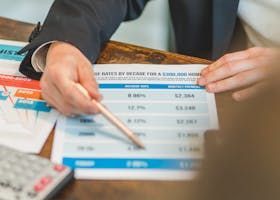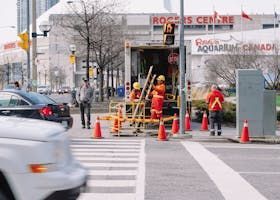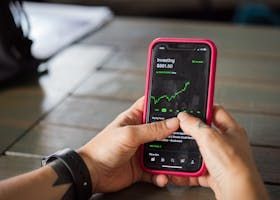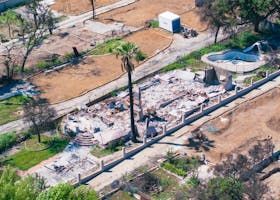Quick Answer: LEED v5 represents the most significant transformation in green building certification since LEED's inception, introducing mandatory health and equity criteria, stricter carbon reduction requirements, and new performance-based metrics that are reshaping how developers approach sustainable construction. Properties with LEED certification currently command 21.4% higher sales prices and 18.1% higher rental rates, making understanding these new standards crucial for real estate professionals and investors in 2025.
The release of LEED v5 has fundamentally altered the landscape of green building certification, moving beyond traditional energy efficiency measures to embrace a holistic approach that prioritizes human health, social equity, and climate resilience. For real estate developers, property investors, and construction professionals, these changes represent both unprecedented opportunities and new challenges that will define sustainable building practices for the next decade.
Understanding LEED v5: A Revolutionary Shift in Green Building Standards
The U.S. Green Building Council (USGBC) launched LEED v5 in response to mounting pressure from climate science, social justice movements, and evolving understanding of building performance impacts on human health. Unlike previous LEED versions that focused primarily on energy efficiency and resource conservation, LEED v5 integrates performance-based outcomes with prescriptive requirements, creating a more comprehensive sustainability framework.
The most significant change lies in LEED v5's mandatory prerequisites. Where LEED v4.1 allowed flexibility in meeting certain criteria, v5 establishes non-negotiable minimums for carbon reduction, health and wellness measures, and equity considerations. This shift reflects the USGBC's recognition that optional sustainability measures have proven insufficient to address the climate crisis.
Current market data reveals the financial implications of these changes. According to the latest Green Building Economic Impact Study, LEED-certified buildings demonstrate measurably superior performance across key metrics. Properties achieving LEED Gold certification show average energy savings of 25-30% compared to conventional buildings, while LEED Platinum buildings achieve savings of 35-40%. These performance improvements translate directly into increased property values, with LEED buildings commanding premiums that far exceed certification costs.
Core Philosophical Changes in LEED v5
LEED v5's approach represents a paradigm shift from a credit-based system to an outcome-focused methodology. The new framework emphasizes measurable results over implemented strategies, requiring buildings to demonstrate actual performance rather than theoretical efficiency. This change addresses long-standing criticisms of the "performance gap" between designed and actual building performance.
The integration of social equity as a fundamental requirement marks another revolutionary aspect of LEED v5. Projects must now demonstrate how their development benefits local communities, addresses environmental justice concerns, and provides equitable access to healthy building environments. This requirement has particular relevance for developers working in urban areas with diverse socioeconomic populations.
Mandatory Health and Wellness Requirements
LEED v5's most transformative aspect involves mandatory health and wellness criteria that extend far beyond indoor air quality measures found in previous versions. The new standards require comprehensive indoor environmental quality monitoring, enhanced ventilation systems, and specific provisions for occupant health and comfort.
Air quality monitoring has become non-negotiable in LEED v5 projects. Buildings must install continuous monitoring systems for particulate matter (PM2.5 and PM10), volatile organic compounds (VOCs), carbon dioxide levels, and other air quality indicators. These systems must provide real-time data to building occupants and facility managers, ensuring transparency in indoor environmental conditions.
The enhanced ventilation requirements exceed ASHRAE standards, mandating minimum fresh air delivery rates that vary based on occupancy density and building function. Healthcare facilities, educational buildings, and office spaces each have specific requirements tailored to their unique indoor environmental needs. These enhanced ventilation systems typically increase mechanical system costs by 8-12% but deliver measurable improvements in occupant health and productivity.
Biophilic Design Integration
LEED v5 formalizes biophilic design principles as quantifiable requirements rather than optional credits. Projects must incorporate natural elements including daylight access, views to nature, natural materials, and outdoor spaces accessible to building occupants. Research from Harvard T.H. Chan School of Public Health demonstrates that employees in buildings with strong biophilic design elements show 15% increase in productivity and 6% improvement in creative thinking compared to conventional office environments.
The specific requirements vary by building type, but all LEED v5 projects must provide daylight access to at least 75% of regularly occupied spaces, with glare control systems to ensure visual comfort. This requirement has significant implications for building design, often necessitating changes to floor plate configurations and facade design strategies.
Stricter Carbon Reduction Mandates
LEED v5's carbon reduction requirements represent the most aggressive sustainability targets in green building certification history. The new standards mandate specific carbon intensity reductions based on building type, geographic location, and size, moving beyond energy efficiency to address total carbon impact throughout the building lifecycle.
Embodied carbon assessment has become mandatory for all LEED v5 projects. Developers must conduct comprehensive lifecycle assessments that account for material production, transportation, construction processes, and end-of-life disposal impacts. This requirement has fundamentally changed material selection processes, favoring locally sourced, recycled, and bio-based materials that demonstrate lower carbon footprints.
The operational carbon requirements demand buildings achieve specific energy use intensity (EUI) targets that vary by climate zone and building type. Office buildings in ASHRAE Climate Zone 4A (which includes cities like New York, Philadelphia, and Kansas City) must achieve maximum EUI of 35 kBtu/sf/year for LEED Certified level, with increasingly stringent requirements for higher certification levels. These targets represent approximately 40% improvement over typical building performance in these markets.
Renewable Energy Integration
LEED v5 significantly expands renewable energy requirements, mandating on-site or community-scale renewable energy systems for all projects. The minimum requirement varies based on building size and type, but typically ranges from 15-25% of total energy consumption for smaller projects up to 50% for large commercial developments.
Community solar programs and renewable energy certificates (RECs) can satisfy these requirements, but LEED v5 prioritizes on-site generation and local renewable energy sources. This preference has sparked increased interest in building-integrated photovoltaics, small-scale wind systems, and geothermal energy solutions, even in dense urban environments where such systems were previously considered impractical.
The economic implications of these renewable energy requirements vary significantly by location and building type. In markets with favorable solar conditions and supportive utility policies, developers report that renewable energy systems achieve payback periods of 6-8 years while contributing to higher property values and tenant satisfaction.
New Performance-Based Certification Process
LEED v5 introduces a revolutionary dual-path certification approach that combines traditional design phase review with mandatory post-occupancy performance verification. This change addresses the persistent "performance gap" between designed and actual building performance that has plagued green building certification for decades.
The new process requires buildings to achieve provisional certification based on design documentation, followed by final certification after demonstrating actual performance for a minimum 12-month operational period. This change means that developers cannot claim full LEED certification until their buildings prove they deliver promised sustainability outcomes.
Performance verification covers energy consumption, water usage, indoor environmental quality, occupant satisfaction, and waste generation. Buildings must maintain performance within 10% of predicted levels to retain their LEED certification, with annual reporting requirements to ensure continued compliance. This ongoing obligation represents a significant shift from the previous "set-and-forget" approach to green building certification.
Technology Integration Requirements
LEED v5 mandates sophisticated building automation and monitoring systems capable of collecting, analyzing, and reporting real-time performance data. These systems must integrate with utility meters, HVAC controls, lighting systems, and water management infrastructure to provide comprehensive building performance visibility.
The technology requirements extend to occupant engagement platforms that provide building users with real-time information about indoor environmental conditions, energy consumption, and sustainability performance. Research indicates that buildings with active occupant engagement systems achieve 5-15% additional energy savings compared to buildings without such systems.
Smart building technologies required for LEED v5 compliance typically add 2-4% to total project costs but deliver long-term operational savings and enhanced building performance that justify the investment. Property managers report that buildings with comprehensive monitoring systems experience 20-30% faster identification and resolution of mechanical issues, reducing maintenance costs and occupant complaints.
Regional Variations and Climate-Specific Requirements
LEED v5 acknowledges that effective sustainability strategies must respond to local climate conditions, resource availability, and environmental challenges. The new standard introduces climate-specific requirements that vary significantly across different geographic regions, reflecting the diverse sustainability priorities facing different markets.
Water management requirements exemplify this regional approach. Projects in arid western regions face stringent water conservation mandates, requiring strategies such as xeriscaping, greywater recycling, and atmospheric water generation systems. Meanwhile, projects in regions prone to flooding must implement comprehensive stormwater management and resilience measures to address climate adaptation needs.
Climate Zone Adaptations
ASHRAE Climate Zone 1 (Miami, Hawaii) projects must prioritize cooling efficiency, humidity control, and hurricane resilience measures. LEED v5 requires these buildings to achieve specific cooling energy intensity targets while maintaining indoor humidity levels within optimal ranges for occupant health and comfort. Hurricane-prone areas face additional requirements for backup power systems and structural resilience measures.
Climate Zone 7 (Duluth, Fairbanks) projects focus on heating efficiency, daylighting optimization during winter months, and cold weather resilience. These buildings must achieve heating energy intensity targets while providing adequate daylight access despite seasonal variations. Cold climate projects also receive credits for innovative heating solutions such as ground-source heat pumps and district energy connections.
Temperate regions (Climate Zones 3-5) face balanced requirements addressing both heating and cooling needs, with emphasis on shoulder season optimization and natural ventilation strategies. These projects often achieve LEED compliance through comprehensive building envelope improvements and mixed-mode mechanical systems that adapt to seasonal conditions.
Urban Heat Island Mitigation
LEED v5 introduces mandatory urban heat island mitigation requirements for all projects in urban areas with populations exceeding 50,000. These requirements include cool roof systems, green roofs, reflective paving materials, and tree planting initiatives that contribute to reducing local temperatures and improving urban air quality.
The specific requirements vary based on local climate conditions and existing urban heat island intensity. Cities with severe heat island effects (urban temperatures 5°F or higher than surrounding rural areas) face more stringent requirements, including minimum percentages of green roof coverage and specific albedo requirements for building surfaces and site paving.
Impact on Different Building Types
LEED v5's comprehensive approach affects different building types in distinct ways, with specialized requirements and opportunities tailored to specific use patterns and occupant needs. Understanding these variations is crucial for developers working across different market segments.
Office buildings face the most comprehensive set of requirements under LEED v5, reflecting their role as testing grounds for advanced building technologies and workplace wellness initiatives. The new standards mandate specific workspace design requirements including minimum ceiling heights, daylight access percentages, and acoustic performance criteria that directly impact tenant satisfaction and productivity.
Multifamily Residential Projects
Residential projects under LEED v5 must address affordability and social equity considerations that extend beyond environmental performance. Affordable housing projects receive specific credits for community benefits, transit accessibility, and resident health programs. Market-rate residential developments face requirements for diverse housing types and community engagement processes.
Indoor environmental quality requirements for residential projects emphasize bedroom air quality, kitchen ventilation, and noise control measures that reflect the unique needs of residential occupants. These buildings must provide individual unit control over temperature, ventilation, and lighting while maintaining overall building efficiency targets.
The economics of LEED v5 compliance for multifamily projects vary significantly based on building type and target market. Luxury residential developments often find that LEED certification provides competitive advantages that justify premium construction costs, while affordable housing projects rely on utility incentives and tax credits to make green building strategies financially viable.
Healthcare and Educational Facilities
Healthcare facilities face specialized LEED v5 requirements addressing infection control, patient comfort, and medical equipment integration. These buildings must maintain stringent indoor air quality standards while accommodating specialized ventilation needs for operating rooms, patient care areas, and laboratory spaces. The certification process includes healthcare-specific performance metrics such as patient satisfaction scores and clinical outcome correlations.
Educational facilities must demonstrate how their design supports learning outcomes and student health. LEED v5 requires minimum daylight levels in classrooms, acoustic performance standards that support effective teaching, and outdoor learning space access for all students. Research indicates that students in LEED-certified schools show 5-10% improvement in standardized test scores compared to conventional school buildings.
Financial Implications and Market Response
The transition to LEED v5 has created significant ripple effects throughout real estate markets, with early adopters gaining competitive advantages while others struggle to adapt to new requirements. Understanding these financial implications is crucial for making informed investment and development decisions in today's green building market.
Construction cost premiums for LEED v5 certification vary significantly based on project type and target certification level. Industry data indicates that LEED v5 Certified projects typically add 3-5% to base construction costs, while LEED Platinum projects can add 8-12%. However, these premiums are offset by various incentives, operational savings, and property value increases that improve overall project economics.
Utility incentive programs have expanded to support LEED v5 compliance, with many utilities offering enhanced rebates for projects that exceed minimum efficiency requirements. Con Edison in New York offers rebates up to $300,000 for commercial projects that achieve LEED Gold or Platinum certification, while California utilities provide additional incentives for projects that demonstrate peak demand reduction capabilities.
Property Value Impacts
Market analysis reveals that LEED v5 certified properties command significant premiums in both sales and rental markets. Class A office buildings with LEED certification average 21.4% higher sales prices compared to similar non-certified properties, while rental rates average 18.1% above market for comparable space. These premiums reflect tenant preferences for healthy, efficient building environments and corporate sustainability commitments.
The premium for LEED certification varies by market, with coastal markets and technology hubs showing the highest premiums. San Francisco LEED-certified office buildings command average rental premiums of 25-30%, while secondary markets typically see premiums of 10-15%. Multifamily residential properties show more modest but consistent premiums, averaging 8-12% above comparable non-certified properties.
Occupancy rates and tenant retention provide additional financial benefits for LEED-certified properties. These buildings typically maintain occupancy rates 4-6 percentage points higher than comparable conventional buildings, while tenant turnover rates average 20-25% lower. Reduced vacancy and turnover costs contribute significantly to improved investment returns for property owners.
Financing and Investment Trends
Green building financing has evolved rapidly to support LEED v5 projects, with specialized loan products and investment vehicles designed specifically for sustainable development. Many institutional lenders now offer preferential interest rates for LEED-certified projects, typically 25-50 basis points below conventional financing rates. These rate advantages reflect reduced default risk and improved long-term property performance associated with green building certification.
Real estate investment trusts (REITs) have increasingly focused on green building portfolios, with several funds specializing exclusively in LEED-certified properties. These funds consistently outperform broader real estate market indices, delivering average annual returns 2-3 percentage points above conventional real estate investments over the past five years.
Technology Integration and Smart Building Systems
LEED v5's emphasis on performance verification has accelerated adoption of smart building technologies that provide real-time monitoring, analysis, and optimization of building systems. These technologies represent both opportunities and challenges for developers seeking certification under the new standards.
Building automation systems required for LEED v5 compliance must integrate multiple data streams including energy consumption, indoor environmental quality, water usage, and occupant behavior patterns. Advanced analytics platforms use machine learning algorithms to identify optimization opportunities and predict maintenance needs, delivering operational improvements that extend far beyond basic LEED compliance.
The Internet of Things (IoT) sensors deployed throughout LEED v5 buildings collect granular data on space utilization, equipment performance, and occupant preferences. This data enables dynamic building operation that adapts to changing conditions and usage patterns, optimizing performance while maintaining occupant comfort and health requirements.
Artificial Intelligence and Predictive Analytics
AI-powered building management systems analyze historical performance data, weather forecasts, and occupancy patterns to predict optimal building operation strategies. These systems can reduce energy consumption by 15-25% compared to conventional building automation while maintaining superior indoor environmental quality and occupant satisfaction.
Predictive maintenance capabilities enabled by AI analytics help building operators identify equipment issues before they result in system failures or performance degradation. Early intervention reduces maintenance costs by 20-30% while extending equipment lifespan and maintaining LEED performance requirements throughout the building's operational life.
Machine learning algorithms continuously refine building operation strategies based on actual performance data, weather conditions, and occupant feedback. This continuous optimization ensures that buildings maintain or improve their sustainability performance over time, addressing one of the key goals of LEED v5's performance-based approach.
Occupant Engagement Technologies
LEED v5 requires comprehensive occupant engagement strategies supported by user-friendly technology platforms. Mobile applications provide building occupants with real-time information about indoor environmental conditions, energy consumption, and sustainability performance. These platforms also enable occupants to provide feedback about comfort conditions and report maintenance issues.
Gamification elements within occupant engagement platforms encourage sustainable behavior through challenges, competitions, and recognition programs. Buildings with active engagement programs typically achieve 5-12% additional energy savings compared to buildings without such systems, while occupant satisfaction scores improve by 15-20%.
Challenges and Implementation Barriers
Despite the clear benefits of LEED v5 certification, developers and building owners face significant challenges in implementing the new requirements. Understanding these barriers is crucial for developing effective strategies to achieve certification while managing project risks and costs.
The most significant challenge involves the complexity of integrating diverse sustainability requirements into cohesive building designs. LEED v5's comprehensive approach requires coordination between architectural, mechanical, electrical, and landscape design teams from project inception through occupancy. This coordination requires expanded design timelines and enhanced collaboration protocols that many development teams are still learning to manage effectively.
Supply chain constraints present another major implementation barrier, particularly for specialized sustainable materials and high-performance building systems. Global supply chain disruptions have created extended lead times for products such as high-efficiency HVAC equipment, advanced glass systems, and sustainable building materials. These delays can impact project schedules and budgets, requiring careful planning and contingency strategies.
Skills and Knowledge Gaps
The construction industry faces significant skills gaps in implementing LEED v5 requirements, particularly regarding advanced building technologies and performance verification processes. Many contractors and subcontractors lack experience with smart building systems, advanced mechanical systems, and sustainable construction practices required for certification.
Training and certification programs have emerged to address these knowledge gaps, but industry-wide adoption remains uneven. The USGBC has expanded its professional credentialing programs to include LEED v5-specific training, while trade organizations offer specialized courses for contractors and building operators. However, the transition to new practices requires time and investment that smaller firms often struggle to provide.
Design professionals also face learning curves in mastering LEED v5's integrated approach to sustainability. Architectural and engineering firms are investing in specialized software tools, training programs, and project delivery methods to meet the new requirements. Early adopters report that initial LEED v5 projects require 15-25% additional design time compared to conventional projects, though this premium decreases as teams gain experience.
Regulatory and Code Integration
Integrating LEED v5 requirements with local building codes and regulations presents ongoing challenges, particularly in jurisdictions with outdated or conflicting requirements. Some LEED v5 strategies may require code variances or alternative compliance paths that add complexity and uncertainty to the approval process.
Progressive jurisdictions are updating their building codes to align with or exceed LEED v5 requirements, creating more streamlined paths to certification. Cities like Seattle, Denver, and Washington D.C. have implemented mandatory green building requirements that incorporate many LEED v5 principles, reducing regulatory barriers for developers pursuing certification.
Future Market Outlook and Predictions
The green building market continues evolving rapidly as LEED v5 requirements drive innovation in sustainable construction practices, building technologies, and development financing. Industry experts predict significant market transformations over the next five years as the new standards become more widely adopted.
Market penetration of LEED v5 certification is expected to accelerate significantly through 2026-2027 as more developers gain experience with the new requirements and supply chains adapt to increased demand for sustainable building products. Current adoption rates show LEED v5 projects representing approximately 35% of new LEED registrations, with this percentage expected to reach 75% by end of 2025 and 90% by 2027.
Technology costs associated with LEED v5 compliance continue declining as smart building systems become more standardized and manufacturing scales increase. Industry analysts predict that smart building technology premiums will decrease from current levels of 2-4% of construction costs to 1-2% by 2027, making LEED v5 certification more accessible across different market segments.
Regulatory Evolution
Local and state governments are increasingly incorporating LEED v5 principles into mandatory building requirements, creating additional market drivers for sustainable construction. New York City's Local Law 97 requires large buildings to meet specific carbon emissions limits that align closely with LEED v5 carbon reduction requirements. Similar regulations are under development in California, Washington State, and Massachusetts.
Federal policy developments may further accelerate LEED v5 adoption through expanded tax incentives, funding programs, and government building requirements. The Infrastructure Investment and Jobs Act allocated significant funding for green building initiatives, while proposed federal building performance standards could create substantial market opportunities for LEED v5 certified projects.
International market expansion presents significant growth opportunities as other countries adopt building performance standards inspired by LEED v5. The European Union's Green Building Directive shares many similarities with LEED v5 requirements, while emerging markets in Asia and Latin America are implementing sustainable building programs that create demand for LEED expertise and technologies.
Innovation and Technology Advancement
Emerging technologies promise to further enhance LEED v5 building performance while reducing implementation costs. Advanced materials such as bio-based insulation, self-healing concrete, and adaptive facades offer new strategies for achieving sustainability targets. Energy storage systems and micro-grid technologies enable buildings to achieve net-zero or net-positive energy performance more cost-effectively.
Artificial intelligence and machine learning capabilities continue advancing, offering more sophisticated building optimization strategies and predictive maintenance capabilities. Next-generation building automation systems will provide even greater energy savings and occupant comfort while simplifying compliance with LEED v5 performance verification requirements.
Strategic Implementation Guide for Real Estate Professionals
Successfully navigating LEED v5 requirements requires strategic planning that begins during early project development phases and continues throughout building design, construction, and operation. Real estate professionals must understand how different implementation approaches affect project outcomes and long-term building performance.
Early engagement with LEED v5 requirements provides the greatest opportunities for cost-effective compliance and superior building performance. Projects that incorporate sustainability goals during site selection and conceptual design phases typically achieve higher certification levels at lower cost premiums compared to projects that address LEED requirements during later design development phases.
Integrated design processes represent the most effective approach for achieving LEED v5 certification, requiring enhanced collaboration between all project team members from project inception. This approach ensures that architectural, mechanical, electrical, and landscape design decisions support overall sustainability goals while avoiding conflicts and redundancies that increase costs.
Team Assembly and Project Management
Building effective project teams for LEED v5 requires careful selection of professionals with demonstrated experience in sustainable design and construction. LEED Accredited Professionals (LEED APs) provide essential expertise, but projects also benefit from team members with specialized knowledge in areas such as building performance modeling, sustainable materials, and indoor environmental quality.
Commissioning agents play crucial roles in LEED v5 projects, verifying that building systems perform as designed and supporting the performance verification requirements of the new standards. Enhanced commissioning requirements under LEED v5 make early commissioning agent engagement essential for project success.
Technology integration specialists help ensure that smart building systems required for LEED v5 compliance function effectively and provide the data necessary for performance verification. These professionals bridge the gap between traditional building systems and advanced technology platforms, ensuring seamless integration and optimal performance.
Risk Management and Quality Assurance
LEED v5's performance-based approach creates new risk management considerations that require comprehensive quality assurance strategies. Performance verification requirements mean that buildings must actually deliver promised sustainability outcomes, making accurate performance modeling and careful construction quality control essential for certification success.
Contingency planning for performance shortfalls helps protect against certification risks while ensuring that buildings can meet LEED v5 requirements even if initial performance falls short of predictions. Many developers implement multiple strategies for achieving key performance targets, providing backup options if primary strategies prove insufficient.
Construction quality control processes must address the enhanced precision required for LEED v5 building systems. Advanced mechanical systems, building envelope details, and technology installations require careful oversight to ensure that construction quality supports designed performance levels.
Frequently Asked Questions
How much does LEED v5 certification typically add to project costs compared to LEED v4?
LEED v5 certification typically adds 1-3% additional cost compared to LEED v4 certification, primarily due to enhanced technology requirements and performance verification systems. However, these additional costs are often offset by expanded utility incentives and higher property value premiums associated with v5 certification. The total cost premium for LEED v5 projects ranges from 3-5% for Certified level to 8-12% for Platinum level compared to conventional construction.
Can existing LEED v4 certified buildings upgrade to LEED v5 certification?
Existing buildings can pursue LEED v5 certification through the Operations and Maintenance (O+M) certification pathway, though this requires demonstrating compliance with v5's enhanced performance requirements. Retrofit projects may need significant technology upgrades to meet monitoring and reporting requirements, while buildings less than five years old often find it more cost-effective to maintain their current certification and pursue v5 during their next major renovation cycle.
What happens if a LEED v5 building fails to meet performance requirements after occupancy?
Buildings that fail to meet LEED v5 performance requirements within the first year of operation have opportunities for remediation before losing certification. The USGBC provides a structured process for identifying performance issues and implementing corrective measures. Buildings have up to 18 months to demonstrate compliance through system adjustments, operational changes, or minor capital improvements. Only buildings that consistently fail to meet requirements after remediation efforts lose their certification status.
How do LEED v5 requirements vary for affordable housing projects?
LEED v5 includes specific provisions for affordable housing that acknowledge budget constraints while maintaining health and environmental performance standards. Affordable housing projects receive additional credits for community benefits and transit accessibility, while some technology requirements can be met through simplified systems. Many states and utilities offer enhanced incentives for affordable housing projects pursuing LEED certification, often covering 50-75% of certification premium costs.
What role do tenants play in LEED v5 performance verification?
Tenant engagement is crucial for LEED v5 performance verification, as occupant behavior significantly impacts building performance outcomes. Certified buildings must provide tenants with sustainability education, real-time performance feedback, and opportunities to participate in building optimization efforts. Lease agreements increasingly include sustainability provisions that outline tenant responsibilities for supporting building performance goals, while landlords provide incentives for sustainable tenant behavior.
Conclusion: Positioning for Success in the LEED v5 Era
LEED v5 represents more than an incremental update to green building standards; it embodies a fundamental transformation in how the real estate industry approaches sustainability, health, and social responsibility. The new requirements create both challenges and opportunities that will reshape competitive dynamics across all property types and markets.
Real estate professionals who embrace LEED v5's comprehensive approach to sustainability will find themselves well-positioned to capitalize on evolving market preferences, regulatory requirements, and investment trends that increasingly favor high-performance buildings. The financial premiums associated with LEED certification continue expanding as tenants, investors, and regulators recognize the value of healthy, efficient, and equitable building environments.
The transition to LEED v5 requires strategic thinking, enhanced collaboration, and investments in new technologies and processes. However, early adopters consistently report that the benefits of certification exceed the costs, delivering superior financial returns alongside meaningful environmental and social impacts. Properties achieving LEED v5 certification command higher rents, sale prices, and occupancy rates while contributing to broader sustainability goals that benefit entire communities.
Success in the LEED v5 era demands understanding that green building certification has evolved beyond energy efficiency to encompass human health, social equity, and climate resilience. Real estate professionals who master these comprehensive sustainability principles will lead the industry transformation while delivering superior outcomes for investors, tenants, and communities. The future belongs to buildings that demonstrate measurable positive impacts across environmental, social, and economic dimensions - precisely what LEED v5 certification represents.
As the green building market continues evolving, LEED v5 provides a roadmap for creating buildings that meet the challenges of climate change, social inequality, and human health while delivering superior financial performance. Real estate professionals who invest in understanding and implementing these standards today will shape the sustainable building landscape for decades to come.











